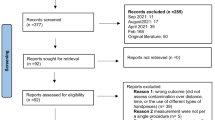Key Points
-
Highlights the importance of air turbine handpiece inspection and demonstrates a general lack of prior training and knowledge in this area.
-
The audit results demonstrate an inability to consistently identify faulty and unsafe air turbine handpieces.
-
Introduces a simple intervention (educational video) which can improve the ability to detect unsafe handpieces.
Abstract
Background The 'high-speed' (air turbine) handpiece is used extensively across many dental disciplines and the ability of clinicians to detect faulty handpieces is essential.
Aim The primary aim of this audit was to determine the proportion of participants who could correctly identify unsafe handpieces. Secondary aims were to determine the proportion that had previous training on the topic and determine whether an educational video could improve scores.
Method Eighty participants completed the first round of audit. They were asked to inspect seven handpieces, five of which were faulty, with three being classed as unsafe. After the intervention (educational sessions and distribution of a video) a second round of audit was completed on 69 participants.
Results The ability to detect the three unsafe handpieces increased from 10% to 44% over the two rounds of audit. In the second round the highest score obtained was by those who had received the intervention, 77%. The lowest score, 14%, was by those who had not received the intervention. Nine percent of participants in the first round stated they had previously had training on handpiece inspection and none of these participants identified the three unsafe handpieces.
Conclusion This audit has highlighted that there is a knowledge deficiency with regards to air turbine handpiece safety and inspection. We have shown that introduction of a simple education video can have an impact on dentists and students abilities to detect unsafe faults. We have already introduced this into the undergraduate curriculum in our school and we aim to also raise awareness within the dental community.
Similar content being viewed by others
Log in or create a free account to read this content
Gain free access to this article, as well as selected content from this journal and more on nature.com
or
References
Stephens R R . The dental handpiece- a history of its development. Aust Dent J 1986; 31: 165–180.
Smith G W G, Smith A J, Creanor S et al. Survey of the decontamination and maintenance of cental handpieces in general dental practice. Br Dent J 2009; 207: E7.
FDA. FDA public health notification: patient burns from electric dental handpieces. 2007. Online information available at: http://www.fda.gov/medicaldevices/safety/alertsandnotices/publichealthnotifications/ucm062018.htm (accessed December 2014).
General Dental Council UK. Preparing for practice. Dental team learning outsomes for registration. 2011. Online information available at: http://www.gdc-uk.org/newsandpublications/publications/gdc%20learning%20outcomes.pdf (accessed December 2014).
Pinsky H M, Taichman R S, Sarment D P . Adaptation of airline crew resource management principles to dentistry. J Am Dent Assoc 2010; 141: 1010–1018.
Haynes A B, Weiser T G, Berry W R et al. A surgical safety checklist to reduce morbidity and mortality in a global population. N Engl J Med 2009; 360: 491–499.
Acknowledgements
The authors would like to thank Alan Brantingham and Steven Colquhoun, instrument curators at Newcastle Dental Hospital for their kind help in the preparation of the faulty handpieces. We would also like to thank Dr McCracken for his kind advice throughout this project and during the production of this manuscript.
Author information
Authors and Affiliations
Corresponding author
Additional information
Refereed Paper
Rights and permissions
About this article
Cite this article
Holliday, R., Venugopal, S., Howell, A. et al. Operator's ability at assessing a high-speed (air turbine) handpiece before use: an audit. Br Dent J 218, E3 (2015). https://doi.org/10.1038/sj.bdj.2015.40
Accepted:
Published:
Issue date:
DOI: https://doi.org/10.1038/sj.bdj.2015.40



